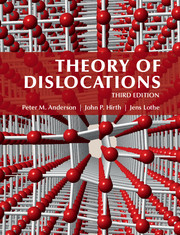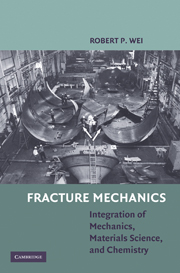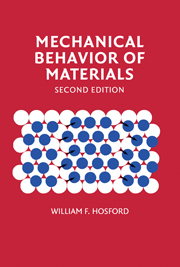Theory of Dislocations
Theory of Dislocations provides unparalleled coverage of the fundamentals of dislocation theory, with applications to specific metal and ionic crystals. Rather than citing final results, step-by-step developments are provided to offer an in-depth understanding of the topic. The text provides the solid theoretical foundation for researchers to develop modeling and computational approaches to discrete dislocation plasticity, yet it covers important experimental observations related to the effects of crystal structure, temperature, nucleation mechanisms, and specific systems. This new edition incorporates significant advances in theory, experimental observations of dislocations, and new findings from first principles and atomistic treatments of dislocations. Also included are new discussions on thin films, deformation in nanostructured systems, and connection to crystal plasticity and strain gradient continuum formulations. Several new computer programs and worked problems allow the reader to understand, visualize, and implement dislocation theory concepts.
- Presents new topics on thin films, crystal plasticity, and dislocation dynamics
- The most up-to-date text available
- Includes extensive new worked exercises and detailed supporting computer programs
- Extensive resources include MATLAB Code and solutions to selected exercises
Reviews & endorsements
'The classic book by Hirth and Lothe has been made much more assessable to a wider audience of students and researchers. The chapters include greatly expanded and improved illustrations. A complete set of worked solutions and supporting MATLAB codes for the problems at the end of each chapter, a set of Powerpoint files containing all figures in the book and Errata are all available at the Cambridge University Press website.' William D. Nix, Department of Materials Science and Engineering, Stanford University
Product details
April 2017Hardback
9780521864367
718 pages
293 × 222 × 37 mm
2.2kg
Available
Table of Contents
- Part I. Isotropic Continua:
- 1. Introductory material
- 2. Elasticity
- 3. Theory of straight dislocations
- 4. Theory of curved dislocations
- 5. Applications to dislocation interactions
- 6. Applications to self energies
- 7. Dislocations at high velocities
- Part II. Effects of Crystal Structure:
- 8. The influence of lattice periodicity
- 9. Slip systems of perfect dislocations
- 10. Partial dislocations in FCC metals
- 11. Partial dislocations in other structures
- 12. Dislocations in ionic crystals
- 13. Dislocations in anisotropic elastic media
- Part III. Interactions with Point Defects:
- 14. Equilibrium defect concentrations
- 15. Diffusive glide and climb processes
- 16. Glide of jogged dislocations
- 17. Dislocation motion in vacancy supersaturations
- 18. Effects of solute atoms on dislocation motion
- Part IV. Groups of Dislocations:
- 19. Grain boundaries and interfaces
- 20. Dislocation sources
- 21. Dislocation pileups and cracks
- 22. Dislocation intersections and barriers
- 23. Deformation twinning.







